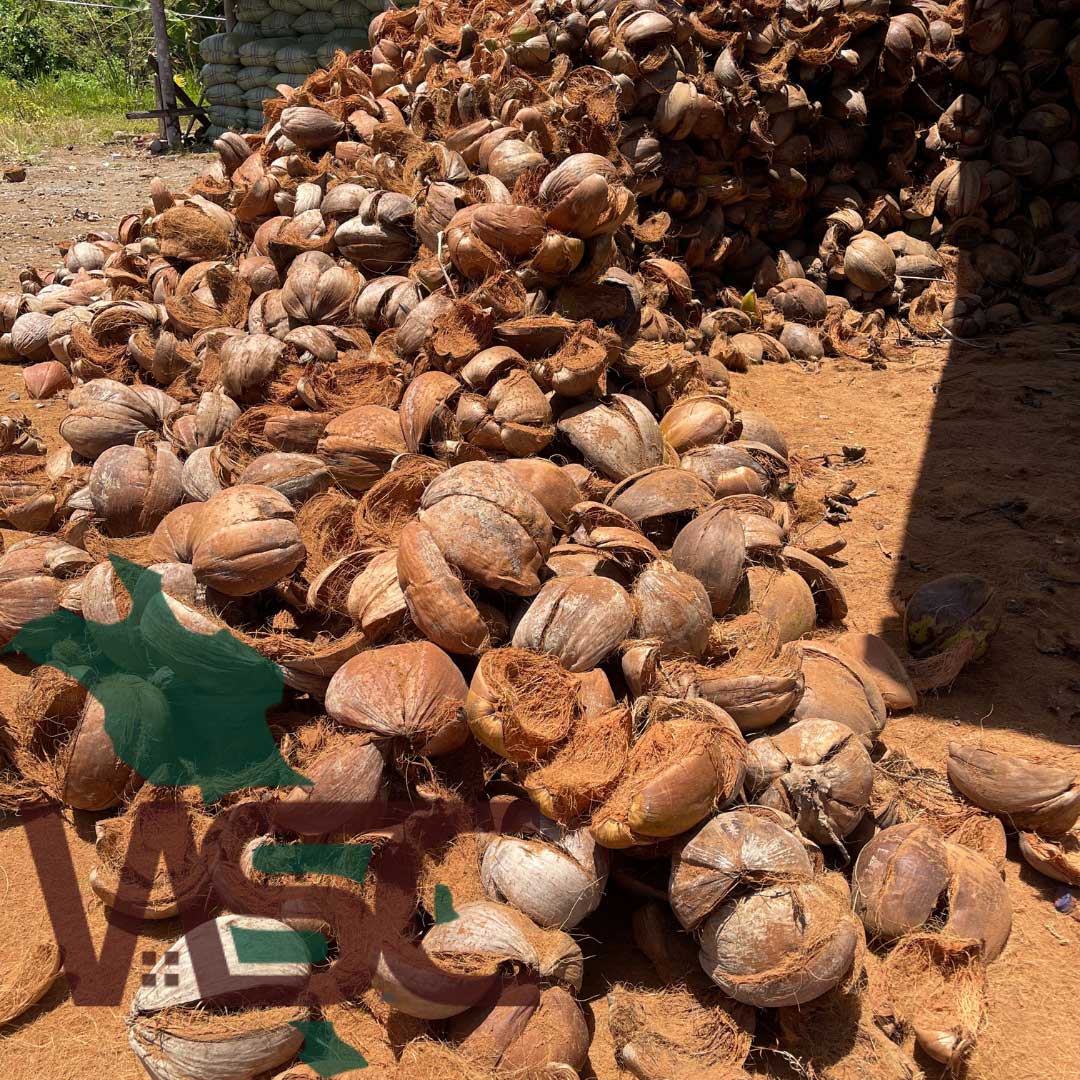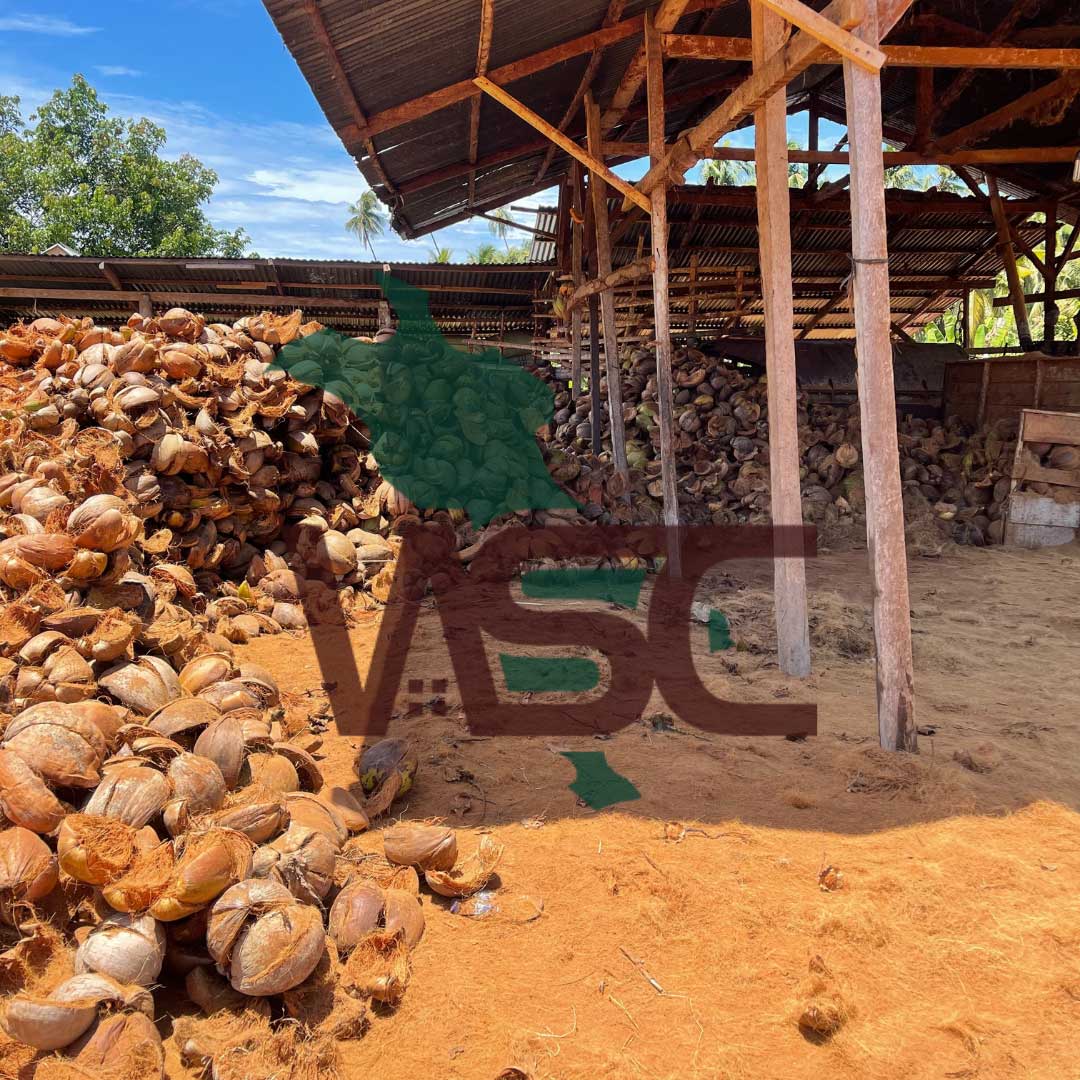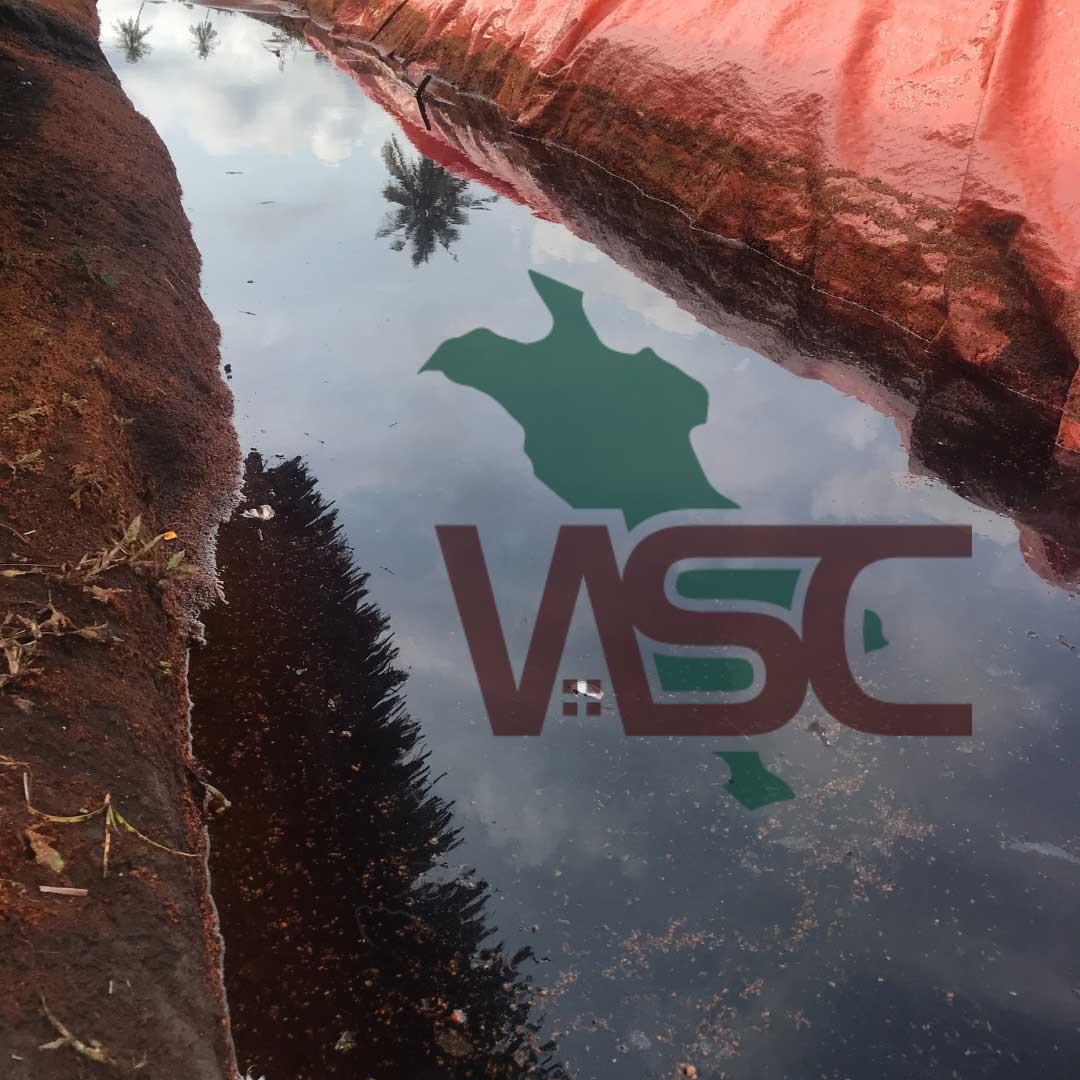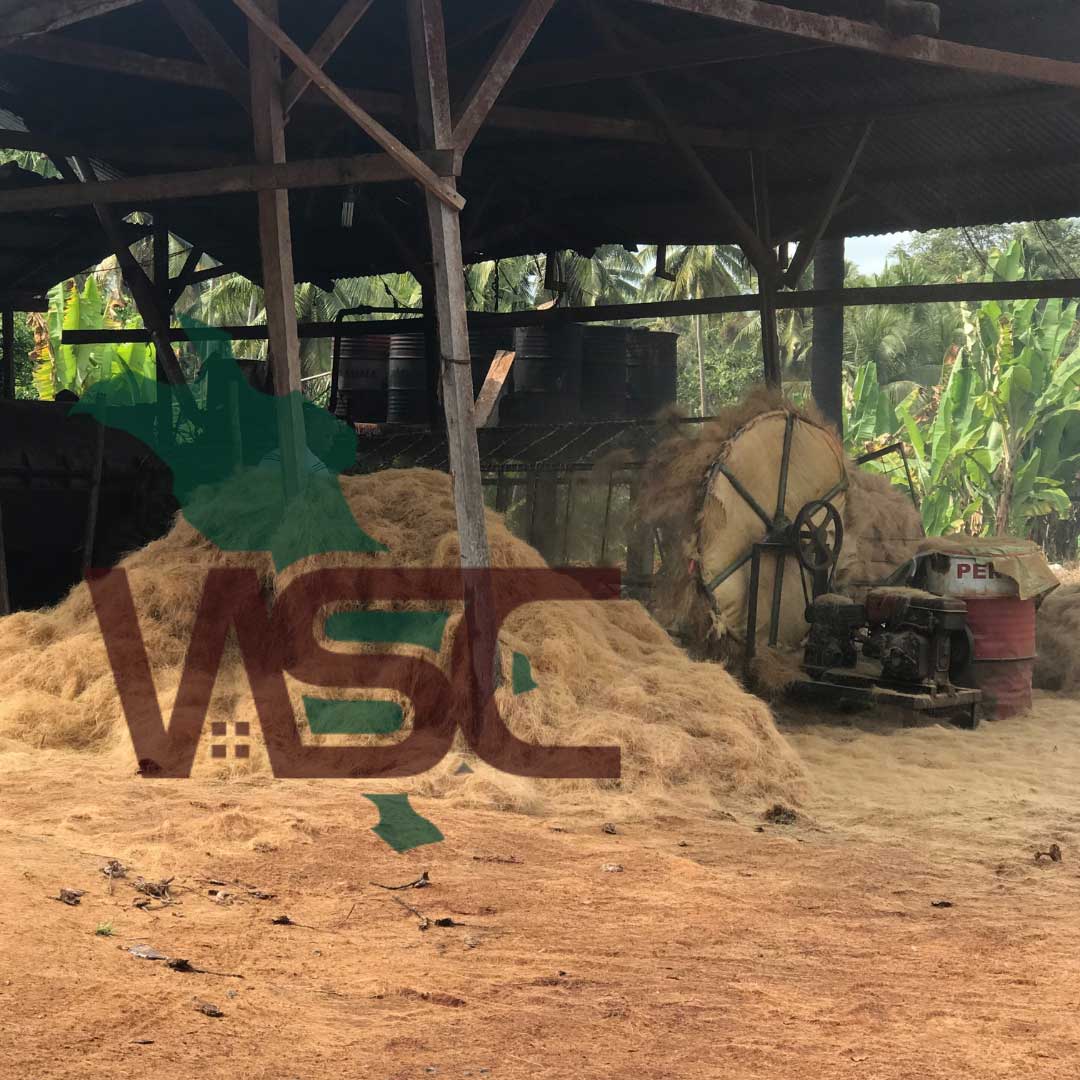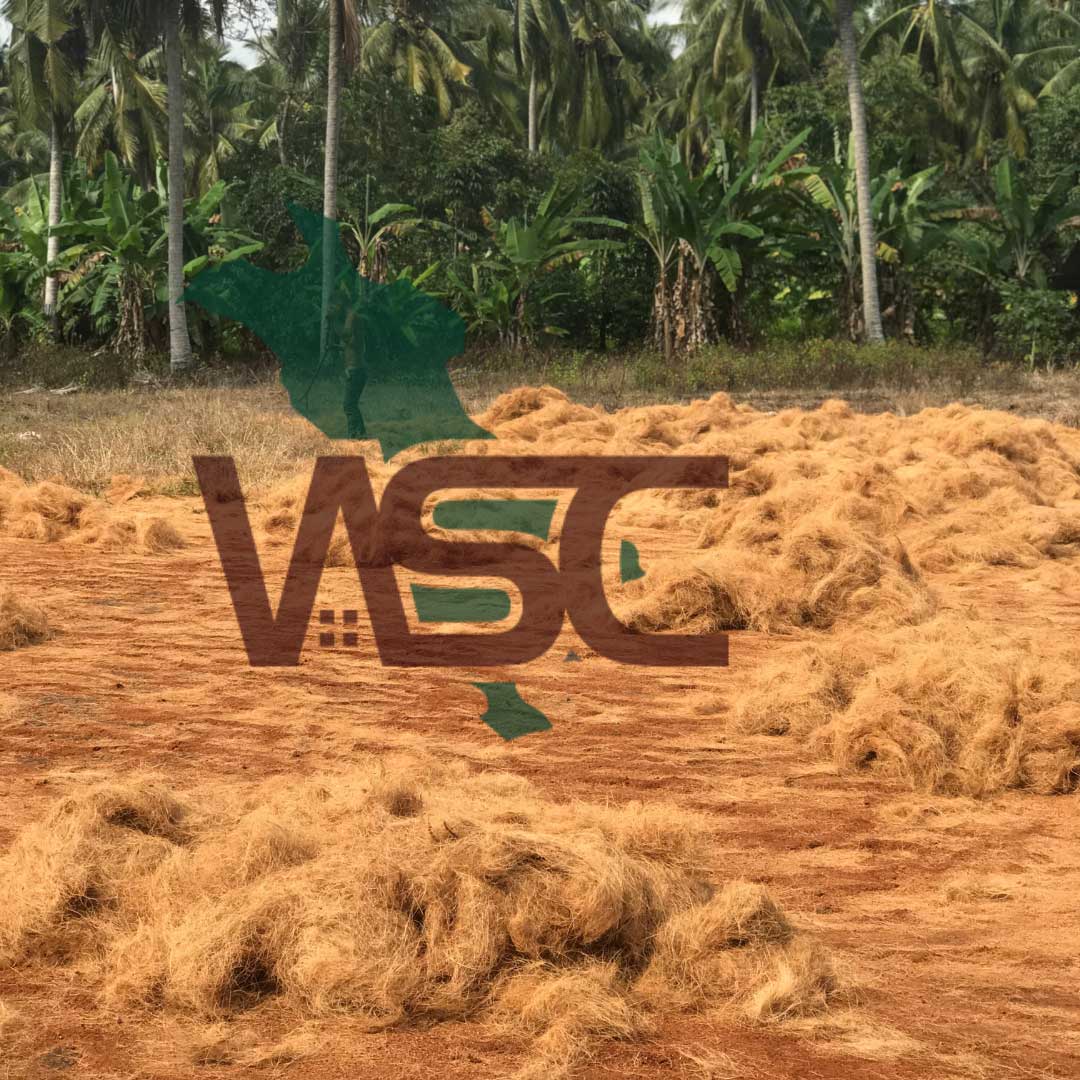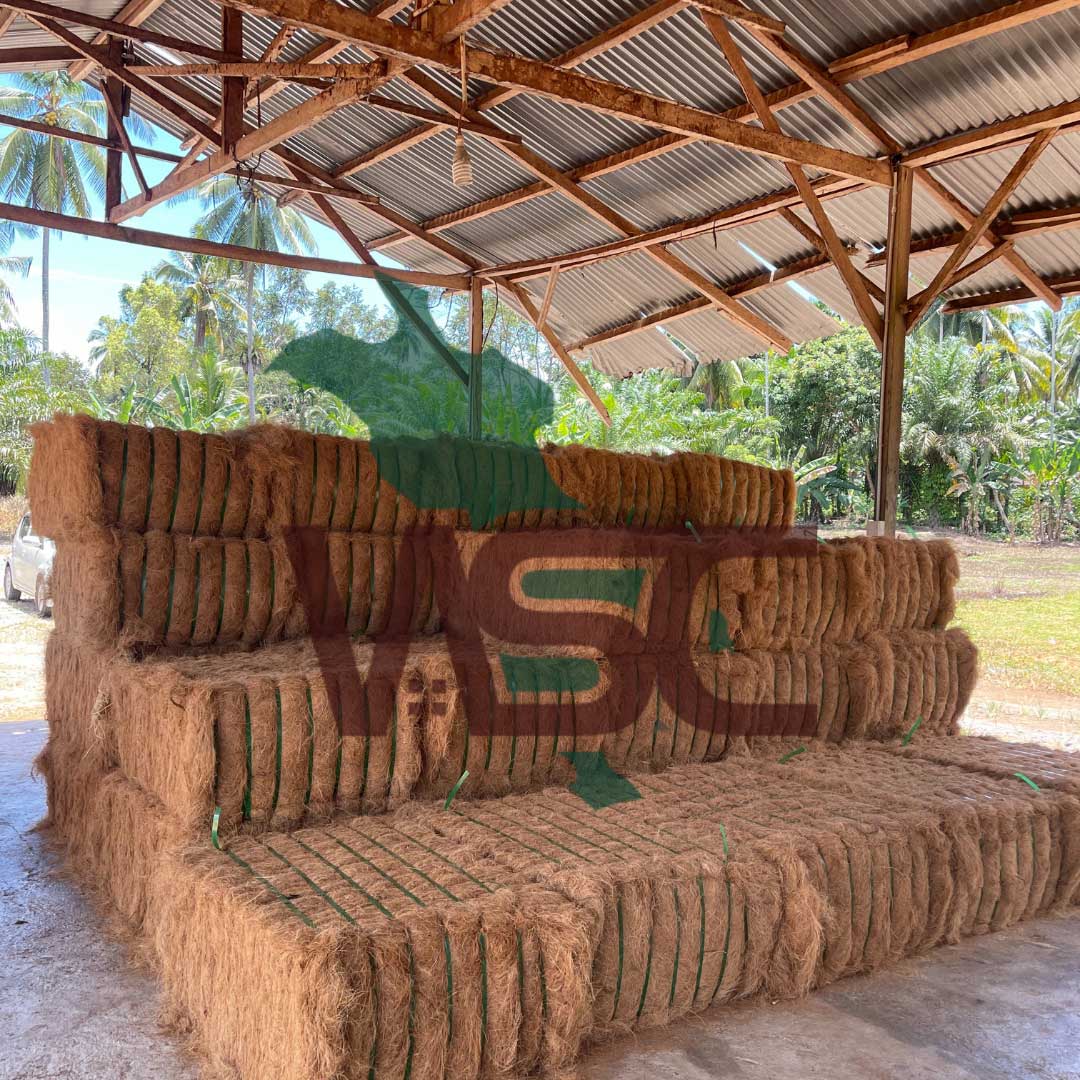The Process Behind Coco Fiber
1. Harvesting
Coconuts are picked at the right stages to cater the industry needs or the ripened coconut fallen on the ground is being collected and mounted in a specific where the next process of husking out would begin.
2. Husking
Now harvested coconut are divided in to categories and ripe coconuts are sent to the machinery or the laymen to begin the process of husking. The unripe coconuts are spread on the ground to dry for a month or more to obtain the level of maturing to husk out. All these husking processes are nowadays made of sharp steel tip with opposite ejection handles to husk out the coconut fiber from the strong husk protected fruit.
3. Retting
Process of decomposing the husk’s pulp through natural & chemical process to separate the coir fiber is called retting. During this process husk are partially decomposed making it easier to separate the coconut Coir fiber & Coconut Coir Pith. In order to ret fully ripe coconut, Fresh water retting is used and in order to ret green husk, Salt water retting is used.
Fresh water Retting: Fully ripe husks are immersed in normal fresh water leaving it soaked for six-month for the microbes to react and ease the process of retting.
4. For Fully Ripe Husk — Mechanical Process
Fully ripe husk are crushed in the machine and retted only 7 to 10 days to start the process of separating the fiber. where the immature husk are dry milled for other purposes.
5. Fibering
Manually workers use wooden mallets to beat on the pulp extracted after retting to defiber the pith and fiber. Now, modern machines have steel drums with beater arms to separate the fiber and pith.
Pith and Fiber are collected separately by using rotating steel drums. Later the fibers are cleaned by water and dried in the sun to extract clean fibers.
Finally, the fiber is sent to various industries and to be exported.


